The Stone Age is broadly defined as the period in history when early humans used tools and weapons made from stone. The era lasted from about 3.4 million years ago to roughly 3,000 BCE and subdivided into three periods: Paleolithic (Old), Mesolithic (Middle), and Neolithic (New).
Also, anyone looking for an astute conversation starter at your local rock club, the term “lithic” is derived from the Ancient Greek word for stone. Rock on.
10. The Blizzard Of Otz
Iconic fashion designer Coco Chanel famously once said, “Before you leave the house, look in the mirror and take at least one thing off.” Sage advice for sure — and a message Ötzi the Iceman could have used 5,300 years ago.
In 1991, two German hikers made a grim discovery while exploring the Ötztal Alps on the border of Austria and Italy: a human body protruding from a partially melted glacier. The well-preserved and heavily tattooed mummified man, who bears a striking resemblance to Iggy Pop, has since become something of a rock star himself. But more importantly, his killer threads provide a fascinating glimpse into Neolithic clothing.
At the time of his death (possibly a homicide), he wore a bearskin cap, goatskin leggings, sheepskin coat, cow skin shoes and a deerskin quiver with 14 arrows. The mix match ensemble not only reflects Ötzi’s risque sense of style (he didn’t wear pants) but also the functionality of certain materials available at the time.
Without question, his choice of footwear reveals a high level sophistication being utilised at the tail end of the Stone Age. The shoes were waterproof and consisted of several animal hide sections, including durable, bear skin soles.
A complete reconstruction of Ötzi the Iceman, featuring most of his cutting edge couture, can be found the at South Tyrol Museum of Archaeology in Bolzano, Italy.
9. Head For The Hills
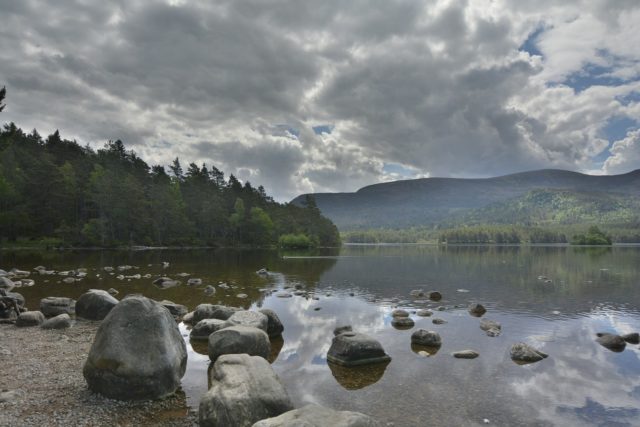
Summer. That time of year when families hit the road and head for the great outdoors to sit around an open fire, cook food on a stick and battle pesky mosquitoes under the stars. Good times. And as it turns out, Stone Age weekend warriors enjoyed camping, too.
The Cairngorms is a popular destination in the Scottish Highlands known for its spectacular mountain scenery and crystal-clear lakes. Mesolithic remnants were recently discovered there on the Mar Lodge Estate that date back to around 6200 BCE. Oddly, however, researchers found no permanent structures, suggesting that the ancient tourists spent only brief stays at the lush hideaway retreat.
Derek Alexander, head of archaeological services for the National Trust for Scotland, said the discovery was a rare find. “It is likely they were up there looking for resources of following game, and it is still an area for hunting. You can see small tents in the middle of glens in Scotland today and that’s probably what they were doing around 10,000 years ago.”
8. Wooly Bully
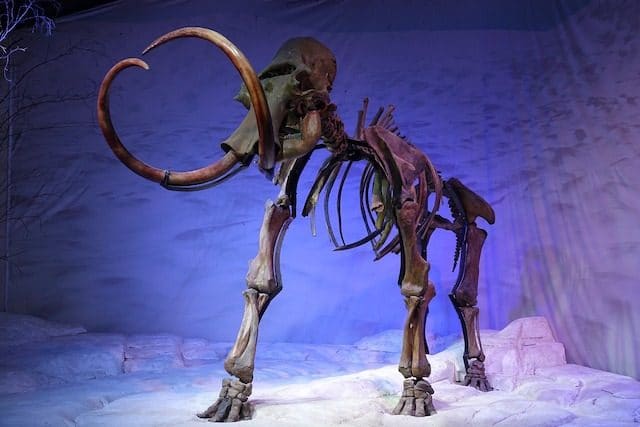
The 1965 megahit “Wooly Bully” by Sam the Sham and The Pharaohs featured murky lyrics that still remain a mystery. Conversely, thanks to well-preserved, frozen fossils, archeologists now possess detailed knowledge on megafauna, such as the woolly mammoth.
Most of the world’s mammoth population vanished about 10,000 years ago, most likely because of climate change. Weighing up to 6 metric tons and reaching over 12 feet in height, the fur-covered creatures adapted well to the frigid environment during the last ice age. It’s long, curved tusks were used for fighting and foraging and co-existed with humans, who hunted the massive beasts for food, and utilized the bones and tusks for art, tools, and dwellings.
Although the wooly mammoths are long gone, they haven’t stopped garnering attention. One of the largest and most intact specimens ever found sold for a record sum of $645,000 at auction in 2017. Additionally, because many other corpses have been unearthed in equally pristine conditions, scientists have been able to extract DNA from the animals. There’s even a project called The Woolly Mammoth Revival, whose aim is to bring them back from extinction through cloning. Most music critics agree that reviving Sam the Sham would be far less dangerous.
7. Let There Be Light
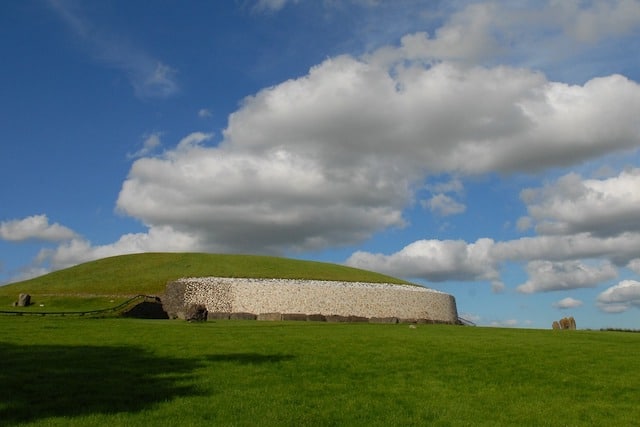
The search for meaning in an unpredictable, violent world spurred early humans to seek guidance from an otherworldly source. They placed particular emphasis on the changing seasons as well as the role of celestial bodies. One way of appeasing their gods involved constructing large burial mounds, linking the living to the dead with ceremonies and sacrifices.
One of these monuments, Newgrange, is a 5,200-year-old Neolithic passage tomb located in Ireland’s Boyne Valley, about 26 miles north of Dublin. Older than Stonehenge and Great Pyramids of Giza, the Irish tumulus required 200,000 tons of building materials and has been hailed as the world’s oldest solar observatory.
During the excavation of Newgrange in the 1960s, archaeologists discovered that on the Winter Solstice, sun rays enter the tomb in perfect alignment to illuminate the inner chamber. Some researchers believe that the entire one-acre site served as a shrine dedicated to the holy union between father sky and mother earth. The outer area is shaped like a pregnant woman’s belly with the inner passage resembling female reproductive organs.
For fans of ancient mythology, the site is also steeped in Irish folklore. Newgrange is said to be where the great mythical hero Cúchulainn was conceived, resulting in superhuman strength and heroic deeds in battle.
6. All-You-Can-Eat (Or-Else-Die)
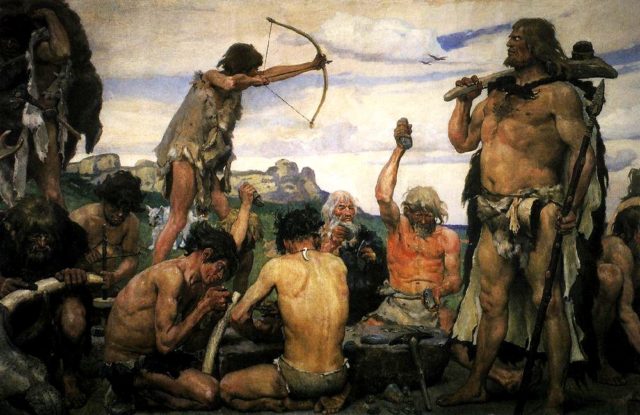
One of the more recent entrants into the multi-billion dollar weight-loss industry, “The Paleo Diet,” is designed to replicate the healthy lifestyle of hunter-gatherers. However, ‘going paleo’ these days lacks several crucial elements endured by early humans, such as the constant threat of starvation, freezing to death, or being eaten by a saber-tooth tiger.
In theory, a diet consisting of lean meat combined with fruits and vegetables (and avoiding chemically-treated and sugar-laden processed foods) will result in lower rates of obesity, diabetes, and heart disease. But the eating habits of those Paleolithic pioneers depended mainly on the availability of sustainable food sources and location.
Also, eating fatty meat would have been particularly helpful during long winter months with little or no sustenance. The Inuit and Thule peoples of the Arctic, who along with and their sled dogs, have survived for thousands of years by hunting blubber-rich marine mammals such as seals and whales.
In favorable conditions, large animals were hunted, such as gazelles, antelopes, and wildebeest. Later, edible plants, eggs, berries, and honey from beehives would be added to the menu, and those living by the sea or other bodies of water learned to spear fish, and set traps for crab and lobsters.
5. Rib Crib
The burning question surrounding the discovery of fire remains a contentious subject among scientists. Early man most likely experienced natural wildfires from events such as a lightning storm, but the ability to control that heat would play a critical role in human development, allowing our ancestors to stay warm, cook meat, and fight off predators. A cave in South Africa might very well hold the clues to the puzzle and also holds the distinction of being the first barbecue joint.
Wonderwerk Cave, located in the Northern Cape province, has been the site of human and early hominin habitation for two million years. In 2012, an international team of archaeologists unearthed what appeared to be traces of campfires from a million years ago. Researchers found evidence of charred animal bones and ashes from plant remains, suggesting that the former cave-dwelling occupants, Homo Erectus, “had some familiarity with fire,” said Francesco Berna, an archaeology professor at Boston University.
Further analysis revealed that the burnt bones’ sharp edges, and the excellent preservation of the plant ash, meant that the fires had occurred inside the cave and not the result of wind-blown debris. Elsewhere, humanity’s other major ongoing feud — which region makes the tastiest barbecue-style — continues to simmer, slow-cooked.
4. Paleo Throw
The sport of javelin throwing traces its roots back to the ancient Olympics in Greece and remains a popular event in the current modern Games. However, the actual throwing of spears goes back to at least 400,000 years ago.
During an excavation at a coal mine in Schöningen, Germany, three wooden javelin-like spears were discovered, revealing the oldest intact hunting weapons ever found. Luckily, the objects had been preserved in soil containing a high concentration of acid-neutralizing chalk at the site. Moreover, the findings suggest that early man could effectively hunt and not just scavenge the remains left behind by large animals.
This formable skill would serve as a crucial development in the settling of northern Europe during the Upper Palaeolithic period. According to Hartmut Thieme, an archeologist from the Institut für Denkmalpflege in Hannover, construction of the javelins measured up to 7.5 feet in length and featured similar weight distribution used in modern implements. “They are really high tech,” says Thieme. “They are made of very tough Picea [spruce] trunk and are similarly carved.”
3. Abstract Art
Life is unfair. The term ‘Neanderthal’ typically carries an unflattering connotation, meaning primitive or uncouth. Despite being highly skilled hunters and the closest extinct relatives of Homo Sapiens, Neanderthals got a raw deal. But that may soon change after engraved markings were discovered inside a cave in Gibraltar might very well have been created by the archaic hominins.
Researchers from 11 European institutions believe that the crisscrossing lines, markings carved in hard bedrock and resemble a tic-tac-toe game, are the first known examples of Neanderthal rock art. The startling discovery suggests that humans and Neanderthals shared the capacity for abstract thought and expression — a major cognitive step in human evolution.
The engravings were found inside a well-known prehistoric site called Gorham’s Cave, located just south of the famous “Rock of Gibraltar.” According to the lengthy study, “Most of the lines composing the design were made by repeatedly and carefully passing a pointed lithic tool into the grooves, excluding the possibility of an unintentional or utilitarian origin.”
2. Multi-tasking
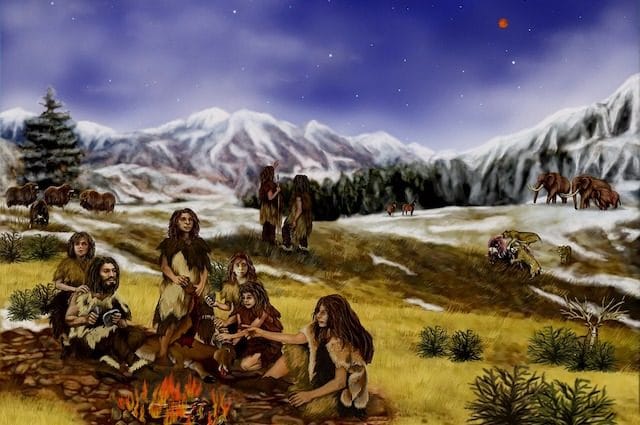
The infamous 1970s advertisement for Enjoli perfume contained the iconic line, “I can bring home the bacon, fry it up in a pan.” As a nod to limitless female empowerment, the jingle could just as easily represent the various roles performed by go-getting, Neolithic women.
In a landmark 2017 study at Cambridge University, the remains of female adults from 7,000 years ago were compared to those from the school’s women’s crew team. The results were startling. Tests revealed that prehistoric women exceeded the upper body strength of collegiate-caliber rowers — and were likely as involved with manual labor as their male counterparts. This type of analysis was the first of its kind. In the past, scientists had only matched ancient female remains to those of men from the same time and region.
The study’s author, Alison Macintosh, an archaeologist at Cambridge, plans to continue working on these comparisons to fully understand how women adapted to various workloads and how their labor helped shape cultural history. “We are currently working to expand what we can interpret about a person’s life from their bones alone, by collecting more data from living men and women, and incorporating information on their muscle and fat as well,” said Macintosh.
1. Stoned Age

Humans have been tripping since the dawn of time. The habitual consumption of psychoactive substances is a universal phenomenon that often involves sacred rituals. Not surprisingly, the Stone Age stoners were no different.
In the Chihuahuan desert of northern Mexico, a region teeming with deadly rattlesnakes, Peyote cactus grows wild. The small, spineless plant features a distinctively green, and button-like appearance. It also contains the chemical mescaline, a natural hallucinogen known to produce altered states of consciousness. And for at least 5,700 years, native people have embarked on Peyote trips as part of religious and healing ceremonies.
Typically, a handful of buttons are either chewed to release the active alkaloids or brewed as a tea. Feelings of euphoria characterize the experience and commonly produces visions and introspective insights. Elsewhere, cacti in South America, such as the San Pedro variety, contains similar chemicals with hallucinogenic properties. Researchers have found pollen and traces of the plant in Guitarrero Cave, home to Neolithic groups living in Peru’s Callejón de Huaylas valley.